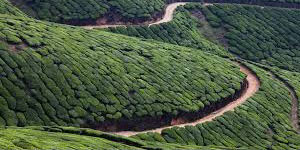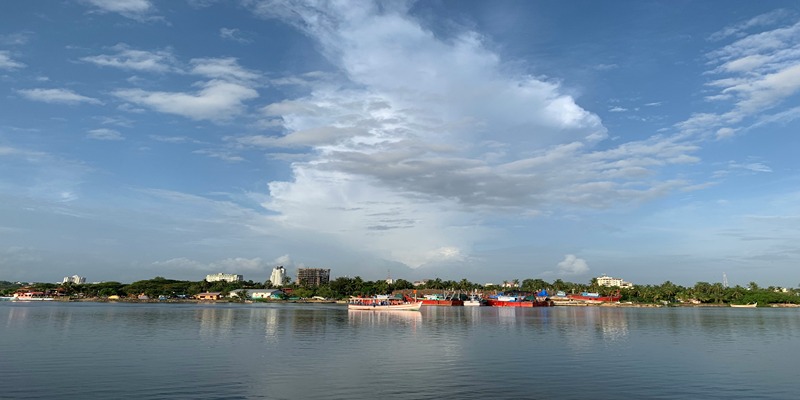As the world keeps evolving and welcoming new trends, Kyrgyzstan has found a way to resist the change and preserve its culture and traditions. Kyrgyz people still have the same way of housing, living and clothing as their ancestors had. It fascinates tourists and leaves them yearning to visit Kyrgyzstan.
Kyrgyzstan is nestled in the heart of Central Asia. Cultural games, rich history, and hospitality of this country make it an exciting destination for tourists. In this guide, you will learn about Kyrgyzstan facts and history and get insights into the key elements of Kyrgyz nomadic culture you will encounter in Kyrgyzstan.

Kyrgyzstan History
The history of Kyrgyzstan is a fascinating story from ancient times to the modern day. Kyrgyzstan was the center of trade routes and attracted great empires throughout its history. It has been home to people of different religions, ethnicities, and cultures, especially the nomadic pagans who practiced Tengrism and Buddhism and later accepted Islam.
The region was predominantly Buddhist before the Battle of Talas in 751 CE. The battle turned the tables as Islam thrived as a religion and soon became dominant in this region. Architectural marvels like the Burana Tower and mausoleums in Uzgen tell tales of Muslim dynasties like Karakhanids.
The 13th-century Mongol conquest forced the ancestors of today's ethnic Kyrgyz to migrate from Siberia to the Tian Shan region, which remained under Mongol control for almost several hundred years. Mongols were unstoppable at that time! Kyrgyzstan found itself trapped between Russia and Great Britain during the 19th century. Eventually, the Russian Empire captured the region.
Kyrgyzstan gained independence from the Soviet Union in 1991, and Askar Akayev became the first president. However, political instability resulted in the Tulip Revolution and protests in 2010. As a result, Roza Otunbayeva became the interim president and the first female leader of Kyrgyzstan. The country has since achieved stability and economic growth.
Kyrgyzstan Facts
Kyrgyzstan is a gorgeous country where time seems to have stopped. It is a one-of-a-kind experience for every tourist who seeks natural beauty, vast landscapes, rich culture, and a nomadic style of living.
Kyrgyzstan Languages
The official languages of Kyrgyzstan are Kyrgyz and Russian. Turkic, English, and Uzbek are also spoken, but not throughout the country.
Population and Ethnicity
According to an official source, Kyrgyzstan Population is around 6.9 million in 2023. Ethnic Kyrgyz make up 60 to 75% of the total population. Other ethnicities, including Uzbeks and Russians, are the dominant minorities in Kyrgyzstan. Interestingly, the country also houses other minorities, including Kazaks, Koreans, Mongols, Uighurs, Ukrainians, Chinese, and Germans.
Kyrgyzstan Religion
Islam is the dominant religion in Kyrgyzstan, with a 90% Muslim population. Ethnic Kyrgyz, Tajiks, and Uzbeks are Muslims. Ethnic Ukrainians and Russians are predominantly Russian Orthodox, while some are Protestants. Other religions include Buddhism, Judaism, and atheism.
Key Elements of Kyrgyz Nomadic Culture
Here are the elements of Kyrgyz nomadic culture you will notice during your tour.
Kyrgyz Nomadic Lifestyle
As part of the Silk Road, Kyrgyz culture has been influenced by Iran, China, the Middle East, and Russia. That's why it has a mix of religions and ethnicities, yet the lifestyle of the majority of its inhabitants remains nomadic. Kyrgyzstan culture clothing is vibrant and includes beautiful embroidery. Ancient traditions, livestock herding, great hospitality, horse culture, and folk music have all managed to survive over time.
Kyrgyz Yurtz
Yurtz is a nomadic dwelling that is a testament to ancient craftsmanship. Although Yurtz culture still exists in most of Central Asia, it has been best preserved in Kyrgyzstan. Yurtz is made of wooden plank framework walls supporting sapling beams and held together at the top by a wooden ring. One Yurtz is enough for a family. However, there are two Yurtz, one for cooking and one for family and guests. Yurtz provides comfort to people in all weather conditions.
Kyrgyz Hospitality
You might wonder why Kyrgyz people are so hospitable. In the past, when people traveled across this harsh weather region, they would be thirsty and hungry, and these people (Kyrgyz ancestors) would provide them with food, shelter, and water. Modern-day Kyrgyz have well maintained the tradition of hospitality. They are known for serving tea and delicacies to the tourists who visit to explore their culture and lifestyle.
Kyrgyz Manas Epic
Kyrgyz Manas Epic is a huge collection of poems that Kyrgyz love to tell each other. This epic includes poems about the victories and adventures of their ancestors. Manas Epic has almost half a million poetry lines. Manas Epic is one of the most extensive collections of oral poems. It has also been included in UNESCO World Heritage because of its epic legends and stories.
Kyrgyz Horse Culture and Games
Kyrgyz continue to adore horses as ancient people did. Kyrgyz nomads still use horses to travel long distances, in games, herding, hunting animals, and for meat and milk. The first lesson for mature nomad kids is regarding horse riding. Kyrgyz nomads continue the tradition of horse games. These games have rules that require courage, bravery, skill, and decisive actions. Kok Buro, At Chabysh, and Kyz Kumai are famous horse games.

Kyrgyz Music and Dance
Folk music and dance are an integral part of the life of Kyrgyz nomads. They have some unique musical instruments you would never have heard of. Their songs are primarily about their ancestors or their nomadic lifestyle. However, Kyrgyz songs may not have lyrics, but they are still worth dancing to. Kyrgyz nomads dance in groups that represent unity and joy.
Kyrgyz Cuisine
You will get to treat your taste buds to many different Kyrgyz cuisines and delicacies. Kyrgyzstan traditional food borrows many dishes from medieval nomadic cultures. Kyrgyz cuisine mainly includes meat, dairy products, fresh vegetables, and cereal like barley and wheat. Plov, Kulchatai, Lagman, Samsa, and Kurma Chai are a few of the famous nomadic dishes.
Conclusion
Because of its geo-economic importance, Kyrgyzstan has been the center of attention for many kings and emperors. Thats why it is home to people of different religions and ethnicities, but its culture remains the same. It remains the center of attention for millions of tourists worldwide. I hope this guide helps you learn and anticipate the key elements of Kyrgyz nomadic culture youll encounter in Kyrgyzstan.




